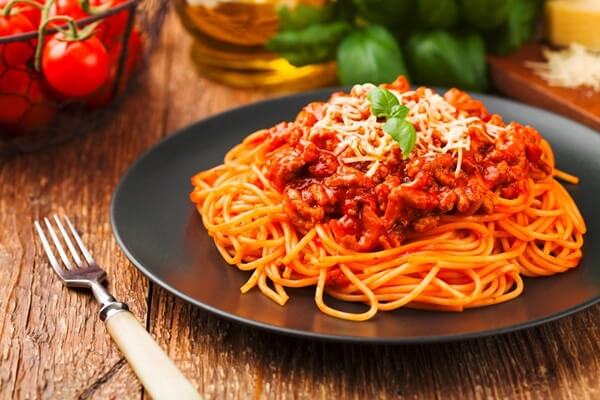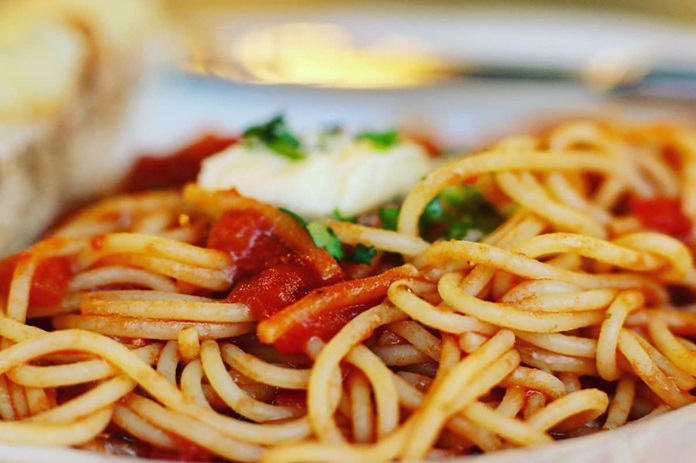National Spaghetti Day is celebrated on January 4th. The day is the perfect chance to choose your favourite sauce and pair it with this long, thin pasta, which hails from Italy and Sicily. Made from semolina flour, spaghetti has been a beloved staple around the world for ages.
History of National Spaghetti Day
Pasta is made from just four basic ingredients, they are water, eggs, wheat, and salt. The earliest known pasta dish was created in Sicily around 1154. However, it was more like lasagna and cooked differently than modern spaghetti. There are no records of pasta until the 14th century, after this initial mention.
Moreover, historians are also confused about the exact origin of modern pasta. It is generally believed to have originated in Italy. But some think Marco Polo might have brought it back from China during his travels, suggesting that China could be the source of pasta.
Regardless of its origins, once pasta arrived in Italy, locals began making it from hard wheat, shaping it into long strands. This is how modern spaghetti evolved, although the earliest versions were more similar in texture to vermicelli.

Likewise, the word ‘spaghetti’ is derived from the Italian word ‘spago,’ which means twine or string. Around the world, spaghetti is typically cooked “al dente,” which means it is tender but still firm to the bite, with a bit of chewiness.
Spaghetti pairs perfectly with tomato sauce because of its chewy yet tender texture. Most spaghetti dishes are served with a meaty tomato sauce and topped generously with freshly grated Parmesan or Romano cheese.
Timeline of National Spaghetti Day
| 1st century B.C. (An Ode to Pasta) | The oldest recorded documentation of pasta is found in the writings of Roman poet Quintus Horatius Flaccus, referring to sheets of dough called Lagana. |
| 12th century (Production Begins) | Spaghetti production kicks off in Sicily. |
| 1870 (Pasta-bilities!) | The combination of tomato juice and spaghetti is printed for the first time in Italian chef Francesco Leonardi’s cookbook “L’Apicio moderno”. |
| 20th century (Pass the Pasta) | Spaghetti evolves to a more American style, prepared with basil or oregano. |
Five Interesting Facts About Spaghetti
- Spaghetti’s Evolution: The shape of the spaghetti we know today evolved from early pasta forms made in ancient civilizations. Ancient pasta was often flat or shaped differently. Spaghetti became popular in Italy around the 12th century, when it started to resemble the long, thin noodles we recognize today.
- Industrial Revolution Influence: The mass production of spaghetti became feasible with the invention of pasta-making machines during the Industrial Revolution in the 19th century. This innovation allowed spaghetti to be manufactured on a larger scale, making it widely available and affordable.
- Regional Variations: In Italy, spaghetti is not just one size or shape. There are various types, such as “spaghettini” (thinner spaghetti) and “spaghettoni” (thicker spaghetti), each suited to different sauces and cooking methods.
- Spaghetti and the World: The first known mention of spaghetti in the United States was in the 19th century. It gained significant popularity after World War II, largely due to Italian immigrants and the widespread availability of canned spaghetti, which introduced Americans to this Italian staple.
- Spaghetti Festivals: Spaghetti is celebrated with various festivals worldwide. For instance, in Italy, the “Sagra dello Spaghetti” is a local festival dedicated to this beloved pasta, featuring spaghetti-themed dishes, cooking demonstrations, and communal meals.
Conclusion
National Spaghetti Day on January 4th is a perfect opportunity to savour one of the world’s most cherished pasta dishes. This day invites everyone to enjoy spaghetti, a culinary classic with deep historical roots. Whether paired with a robust tomato sauce or a more adventurous topping, spaghetti remains a versatile and beloved staple in kitchens worldwide. As you celebrate, remember the fascinating evolution of this pasta from its ancient origins to its modern-day prominence. With its rich history and continued popularity, National Spaghetti Day highlights the timeless appeal of this simple yet delightful dish.
Frequently Ask Question
What are the key ingredients used to make spaghetti?
Spaghetti is made from four basic ingredients: water, eggs, wheat, and salt. It is traditionally made from semolina flour.
Where did spaghetti originate?
Spaghetti is generally believed to have originated in Italy, though some theories suggest it could have been introduced from China by Marco Polo. The modern form of spaghetti began to take shape in Italy.
Why is spaghetti called “spaghetti”?
The name “spaghetti” comes from the Italian word “spago,” which means twine or string, reflecting the pasta’s long, thin shape.
What does “al dente” mean about spaghetti?
“Al dente” refers to spaghetti that is cooked to be tender but still firm to the bite, with a slight chewiness.
What are common ways to serve spaghetti?
Spaghetti is often served with tomato sauce, typically accompanied by a meaty tomato sauce and topped with freshly grated Parmesan or Romano cheese.
You may also like to read, International Stout Day – November 7, 2024
